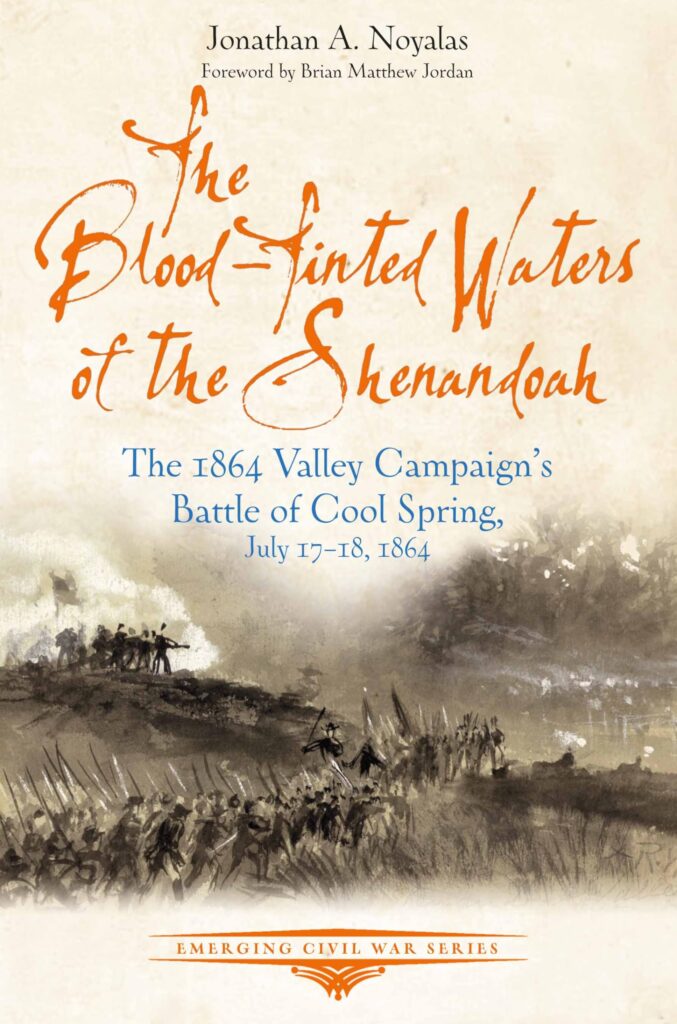By Jonathan A. Noyalas.
El Dorado, Hills, CA: Savas Beatie, 2024.
ISBN 978-1-1611-2171-5. Maps. Illustrations. Appendices.
Pp. 170. $16.95.
By the middle of June 1864, the Union Army of the Potomac stood at the gates of Petersburg, Virginia, about twenty-three miles south of the Confederate capital Richmond. If the former could be captured, General Robert E. Lee’s Army of Northern Virginia, then defending Richmond, would have its supply and communications severed from the resources of the rest of the Confederacy. If that occurred, Lee’s army would have to abandon Richmond or be destroyed attempting to defend it against an enemy almost double its numbers.
Lee’s answer to this dilemma was to dispatch his army’s II Corps (about 12,000 strong), under Lieutenant General Jubal A. Early, in mid-June to Virginia’s Shenandoah Valley. The purpose of this strategic diversion was to clear the Valley of Federal forces currently menacing that vital supply area, threaten Washington, DC, and thus draw substantial Union military forces away from the Richmond-Petersburg area.
The ploy succeeded well when Early pushed Union Major General David Hunter’s Union force out of the Shenandoah Valley by 18 June. On 9 July, Early defeated Major General Lew Wallace’s contingent at the Monocacy River near Frederick, Maryland. Three days later, he threatened the Union capital. These events caused Lieutenant General Ulysses S. Grant to transfer the Union VI Corps to Washington by 11 July, thus reducing the threat to Lee’s army at Petersburg.
Realizing he could not capture Washington, Early moved west. Reacting, the Union War Department ordered Major General Horatio Wright’s VI Corps to join Major General George Crook’s troops from West Virginia in pursuit of the Confederates. Between 14 and 17 July, Early’s Valley of the Army crossed the Potomac River, then entered the Shenandoah Valley via Snicker’s Gap. Wright and Crook, who had joined forces on 15 July, followed. Thus, the scene was set for the fight a day later at Cool Spring, also known as Castleman’s Ferry, Island Ford, Parker’s Ford, and Snicker’s Ferry.
The above summary of the opening chapters of The Blood-Tinted Waters of the Shenandoah presents readers with a thorough understanding of the operational moves of the opposing forces leading up to the battle at Cool Spring in Clarke County, Virginia. The battlefield tactics, as exhibited during the skirmishes between the parties on 16 July at Heaton’s Crossroads and Woodgrove in Loudoun County, as well as the minor action the next day at Castleman’s Ferry (Snicker’s Ford), are also examined.
Chapters Four through Six describe the Battle of Cool Spring in almost hour-by-hour detail through a narrative laced with personal, detailed, and gripping accounts. In addition to a graphic portrayal of an American Civil War battle, supported by five excellent maps, author Jonathan Noyalas allows readers to experience the event with a number of very informative appendices, ranging from one providing a tour of the battle site, another listing the soldiers—North and South—killed during the action, and one copiously filled with letters and documents from participants relating their part in and analysis of the battle.
Noyalas, a history professor at Shenandoah University and author or editor of fifteen books, has vividly brought to life a small but intense action fought during the American Civil War. His study is a worthy and significant expansion of Peter J. Meany’s 1980 work, Civil War Engagement at Cool Spring, July 18, 1864.
Noyalas does not provide a bibliography or endnotes. This omission is characteristic of books from the Emerging Civil War Series. Those two items, found in Meany’s work, would have enhanced the book’s scholarly standing.
Richard Blumberg
Spring, Texas
